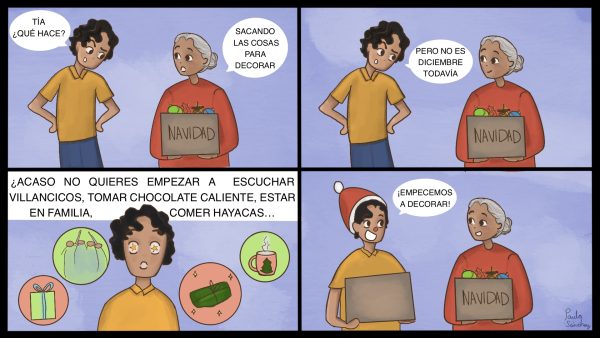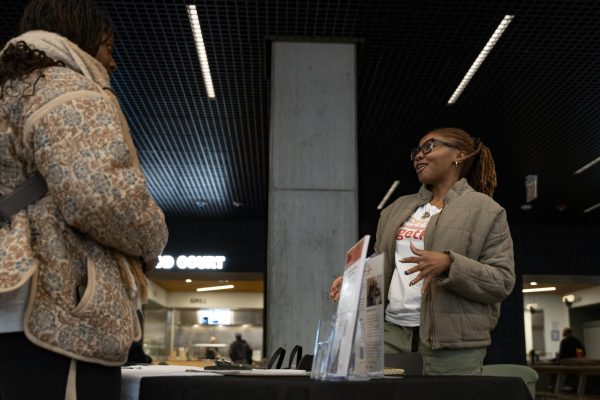Students protest at Occupy Chicago
October 16, 2011
Thousands congregated outside of the Modern Wing of the Art Institute of Chicago, 111 S. Michigan Ave., on Oct. 10, chanting about democracy and demanding change. Among the thousands was a handful of Columbia students who are making it their occupation to Occupy Chicago.
The movement has sprung from the Occupy Wall Street demonstrations that started in July. Occupy Chicago has brought together thousands since Sept. 23 to peacefully protest corporate power and greed.
“It started out with just corporate greed, and it’s grown into a lot of [things] people would want because, since this is happening, it’s giving a lot of people a chance to speak their voice with other things they don’t like about the illusion of democracy that we have,” said Alicia Walker, sophomore photography major. She has been with the movement for two weeks.
Walker said she camped out with her friend, DJ Howard, a sophomore fiction writing major, outside of the Federal Reserve Bank at LaSalle and Jackson streets, the demonstration’s deemed headquarters.
The movement’s slogan is “We are the 99 percent,” referring to the portion of the population who feel they are oppressed by the one percent of the population’s corporate business owners in power, according to OccupyChi.org.
Though the protests are physically close to home for Columbia, many students are completely unaware of the issue.
Louis Silverstein, distinguished professor in the Humanities, History and Social Sciences Department who teaches “Education, Culture and Society” and “Peace Studies,”, said that out of his three sections, approximately 90 percent don’t have a clue that the movement exists, and those who had heard of Occupy Chicago did not know what the issues are.
“[Students] don’t see the link between what those folks are demanding and their
[own] lives,” Silverstein said. “Their lives are affected profoundly by what the issues of Occupy Chicago are attempting to erase, whether you’re a student looking for ways to finance your education, whether you’re [looking for]
employment.”
Jess Davis, sophomore English major who has attended the demonstrations daily since Oct. 3, said the movement’s last of 12 demands (see page 44), which were adopted from Occupy Wall Street, is to forgive school loans.
The student protesters agreed that the need to understand that jobs are not available—especially to college graduates specializing in art—is vital.
“This is our future we’re walking into, and if we want to have any kind of say in how it’s going to shape, I think kids need to be, at the minimum, educated on how this country really works,” said Colleen Mares, junior arts, entertainment and media management major, who has been with the movement since Sept. 26.
“We’re stepping into a country that isn’t really supporting us.”
Student protesters argue several reasons for Columbia students’ lack of involvement and awareness of Occupy Chicago.
“The biggest problem we’re facing is the apathy that has taken over this generation,” said Sarah Elabdi, junior marketing communication major, who has been with the movement for three weeks. “I think a lot of people don’t want to take the time to educate themselves [sic].”
Walker and Howard believe insufficient media coverage of the protests is a major factor as to why students are not informed.
Davis simply blames ignorance and lack of understanding of how America’s government works, but Silverstein asked his students their opinion.
“The feeling in most of my students is that, while they can go and do service, they can’t really bring about any change, so they feel powerless,” he said. “They feel impotent.”
Howard—who wears a bandana around his calf that says the name of the movement—and Silverstein believe the protests can be a good way for Columbia students to utilize their talents.
Filming the protests and putting the videos on YouTube is one way, Silverstein said. He said it also promotes awareness because it forces students to get out and talk to people.
He also believes students’ voluntary lack of involvement is “reinforcing the
status quo.”
Davis said she hopes Columbia will communicate the issue to the students and suggested that faculty members take some time to discuss it in class.
“We’re creative minds,” she said. “There is no harm in telling students about current events. They don’t have to take a side, but just [inform] and [have] an open discussion letting people say what they think.”
The student protestors and Silverstein stressed the fact that the current generation has never seen an uprising like this before.
Walker believes students should be “jumping” at the chance to be part of something like this in their generation.
“Any social change that has occurred in the United States of America started with people who said, ‘That’s not too big for me,’” Silverstein said. “And they don’t look any different from you.”






